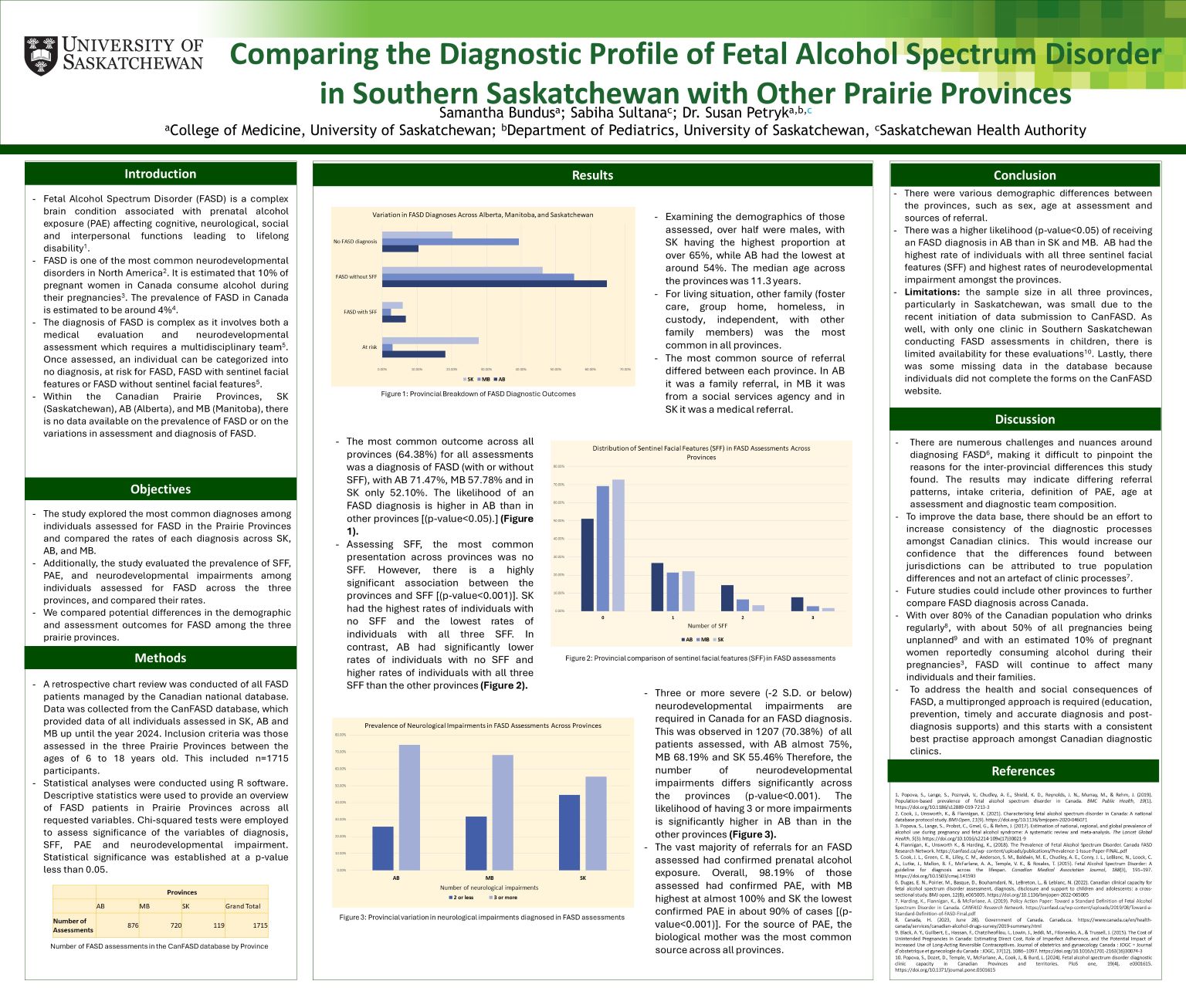
Comparing the diagnostic profile of Fetal Alcohol Spectrum Disorder in southern Saskatchewan with other prairie provinces using our CanFASD national database
Samantha Bundus
Fetal Alcohol Spectrum Disorder (FASD) is a complex brain condition associated with prenatal alcohol exposure (PAE) affecting cognitive, neurological, social and interpersonal functions leading to lifelong disability. FASD is estimated to affect up to 4% of the Canadian population. The CanFASD database compiles data from multiple Canadian diagnostic centres and thus provides the most comprehensive profiles on individuals assessed for FASD in Canada. The present study compared the CanFASD demographic and assessment data for FASD in children ages of 6 to 18 years amongst the three Prairie Provinces, Saskatchewan (SK), Alberta (AB), and Manitoba (MB).
RESULTS: This study found some similarities but several important differences amongst Canadian Prairie Provinces diagnosing FASD. There was a higher likelihood (p-value<0.05) of receiving an FASD diagnosis in AB than in SK and MB. AB had the highest rate of individuals with all three sentinel facial features (SFF) and highest rates of neurodevelopmental impairment amongst the provinces. There are numerous challenges and nuances around diagnosing FASD, making it difficult to pinpoint the reasons for differences across the three provinces. The results may indicate differing referral patterns, intake criteria, definition of PAE, age at assessment and diagnostic team composition.
